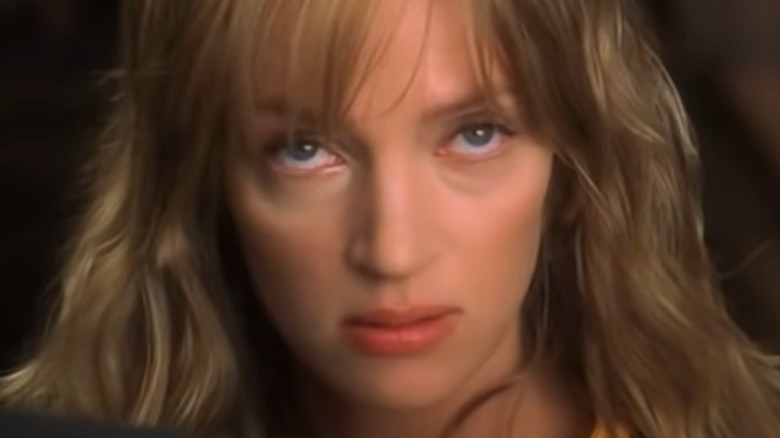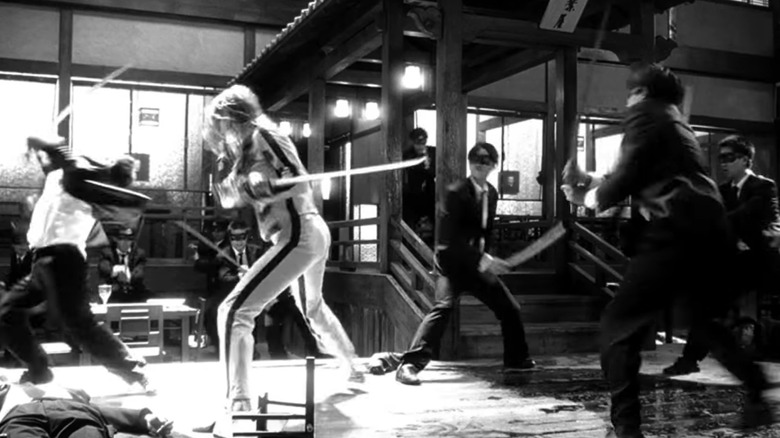What Kill Bill: Vol. 1 Had To Change To Remove Its NC-17 Rating
Originally responsible for the infamous Hays code guidelines (via NPR), the Motion Picture Association (MPA) now uses a film rating system to advise citizens on the suitability of movie content for certain audiences. For example, the "R" rating means that the movie is best for mature audiences over 17 (via Master Class). An "NC-17" rating, meanwhile, indicates that the theater may not allow a person under 17 inside because of a movie's adult content. As a result, studios often make small changes so films can get an "R" rating (via The New York Times).
Someone all too familiar with the "R" rating is movie maestro Quentin Tarantino. He's had a massive impact on the pop culture landscape with films such as "Pulp Fiction" and "Django Unchained." His movies have become known for their dialogue as well as their explosive, shocking violence. The scene in "Reservoir Dogs" where Mr. Blonde (Michael Madsen) mutilates a cop, for example, has become infamous. His most recent film, "Once Upon A Time in Hollywood," was celebrated as well as criticized for its gruesome alterations to 1969 Hollywood history (via Vox). But even a respected auteur director has to make production changes to satisfy the rating board.
Tarantino changed the look of a crucial Kill Bill: Vol. 1 scene
Tarantino's films always have a few telltale signs of the director's handiwork: fictional brands, theatrical dialogue, and outbreaks of violence. But "Kill Bill, Vol. 1" was still a departure for the filmmaker; the first half of the two-part "Kill Bill" saga focused on dazzling swordplay and the epic revenge of the Bride (Uma Thurman), a skilled assassin left for dead by her lover Bill (David Carradine). However, Tarantino and movie distributor Miramax still had to contend with the MPA's requirements for an R rating (via The New York Times).
Per The New York Times, before showing the final cut to the rating board, Tarantino actually incorporated changes into production to ensure the film received an "R" instead of "NC-17." These included formatting especially bloody shots of the Bride fighting the Crazy 88 assassins into black and white, as well as rendering one particularly nasty sequence as an anime scene. Even with this, the first cut was still deemed unacceptable, and changes had to be made.
Eventually, Tarantino got his wish, and fortunately for the director, the MPA tends to be more lenient toward violence anyway. As Nick Browne, a University of California professor quoted by NYT, pointed out, when the MPA decides how to warn parents about the contents of a film, the organization doesn't focus as much on gory violence but prioritizes "bad language and graphic nudity." Still, Tarantino achieved a more stylistic sequence that helped elevate the film from other revenge flicks of its ilk.

